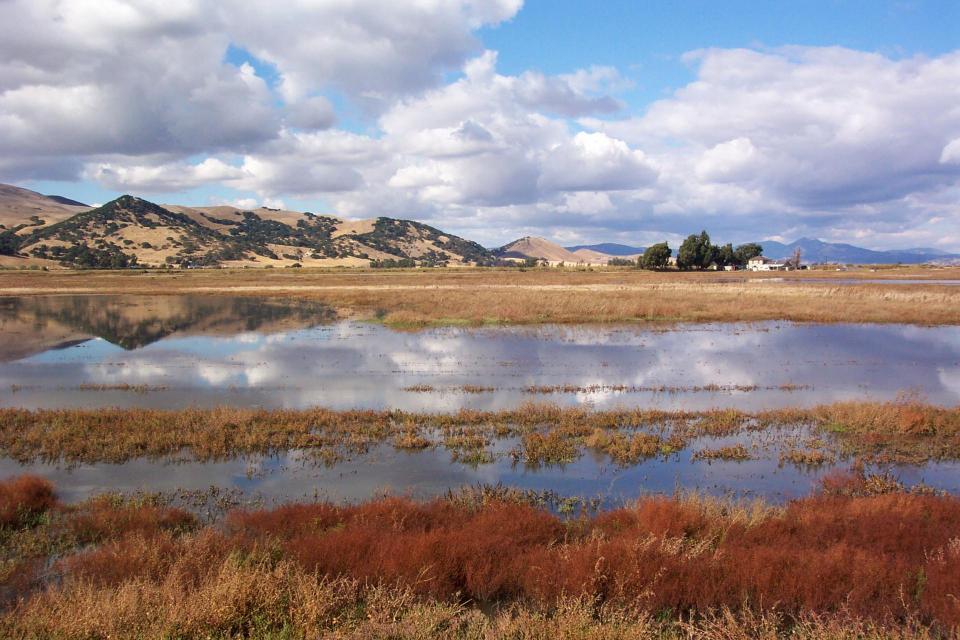Estuary
 Estuaries are places where fresh and
salt water mix, usually at the point where a river enters the
ocean. They form highly productive natural habitats due to a
combination of tides, waves, salinity, fresh water flow and
sediment.
Estuaries are places where fresh and
salt water mix, usually at the point where a river enters the
ocean. They form highly productive natural habitats due to a
combination of tides, waves, salinity, fresh water flow and
sediment.
The San Francisco Bay and the Sacramento-San Joaquin River Delta, which is situated more than 60 miles inland, form the largest freshwater tidal estuary of its kind in western North America. The entire system is divided into the Bay and Delta, or the upper and lower estuary. The estuary’s watershed extends from the ridgeline of the Sierra Nevada to the edge of the Pacific Ocean, accounting for almost 60,000 square miles – about 40 percent of California.
Learn more about the Sacramento-San Joaquin Delta — its history, competing uses and demands — in our Layperson’s Guide to the Delta.
Estuaries have been extensively developed as ports, wastewater disposal, fishing grounds, recreational areas and urban and agricultural land use. Many places around the globe are built in estuarine environments, such as London, Amsterdam, Venice, Calcutta, Hong Kong, Shanghai, San Francisco, Buenos Aires and New York.
Estuaries are complex ecosystems and it takes unique organisms to survive in them. There are regular tidal fluctuations in salinity and “salinity crises” sometimes occur when floods or drought dramatically upset the salinity balance. The salty nature of estuaries means fish and other aquatic life that are used to fresh water must adapt to the sometimes elevated levels of salinity. This is done in some cases by extraordinary kidney functions that help maintain the right homeostatic balance.
In an estuary’s mixing zone, saltwater can move miles upstream and down as river flows fall and rise. California’s Great Flood of 1862 pushed the mixing zone of the San Francisco Bay Estuary beyond the Golden Gate for several weeks and freshened the Pacific Ocean’s surface 40 miles from shore. At the opposite extreme, during the dry summer and fall of 1931, the Sacramento-San Joaquin Delta’s mixing zone salted the water as far upstream as Courtland on the Sacramento River and Stockton on the San Joaquin River.
Estuaries are island-like in that they are isolated from one another by long stretches of ocean. They are very vulnerable to invasion by weedy pests from other estuaries. Invasive species access estuaries through the ballast water of ships. When ships take on water in one part of the world and release it in another, aquatic plants and animals are transported along with the water and introduced into foreign estuaries.








